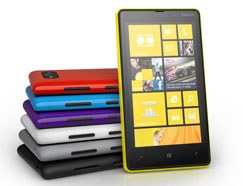Al Dean looks at what the mobile phone manufacturer’s latest move might mean to the 3D print crowd
For as long as I can recall, the 3D printing evangelists have talked about how manufacturers will distribute 3D datasets so that customers can print off their own spares and accessories. But until now, I didn’t know of a single organisation that had taken that step.
Nokia has just announced that it is making mobile phone datasets available on its developer website (developer.nokia.com) so customers can make modifications or accessories to print out on a 3D printer. So let’s explore.
What is it offering?
For those that have ever been involved in developing products for the mobile phone industry, a developer network is something that’s available for almost every brand of device.
Registered, sometimes, paid up members will often find a set of drawings for each model so that accessory designers can grab key dimensions and ensure a good fit.
Some vendors have also made 3D models available. In fact, many years ago, I used the 3D dataset for the Handspring Treo to test 3D printers — I’ve still got a box full of increasingly brittle models somewhere in the office.
Nokia has made available the dataset for its Lumia 820’s backplate as a set of STL and STEP files, along with a few words of wisdom including skip metal, some MakerBot settings and such.
What can you do with it?
The most immediately obvious thing to do is take the data and print it. Owners of 3D printers will notice that the main body of the shell is ideal for printing.
But if you want to print the smaller buttons and camera support, then you might encounter problems, particularly with lower-end 3D printers.
That said, you can make a good fist of it, though with a 2mm wall section all round, you’ll have to watch out for how it builds — layer thickness, fill method and build orientation.
The other option is to have it printed by one of the many service providers. Out of curiosity, I uploaded all the parts to Shapeways. Some could be printed, others couldn’t. With shipping, it came to €30 (that’s about a €10 premium over shop bought cases for the same phone).
The devil is in the (legal) details
Nokia is making everything available behind a password, registered site. The reasons become apparent as soon as you read the terms and conditions.
Supplied with each dataset, you’ll find a readme.txt that contains the legal blurb. The key paragraph that jumps out is:
“The service provides you with mechanical drawings and other related materials enabling you to make custom modifications or accessories for your phone, and to print them out on a 3D printer. Use of the service is allowed only for your personal, non-commercial use. You agree to use only the recommended materials, and only in the recommended manner, when printing 3D materials. You acknowledge and agree that failure to use proper materials and processes can result in your phone not working properly or even breaking, and may void any warranty for the phone.”
So, what does it mean?
Sharing 3D data is nothing new, but by offering 3D print ready files Nokia has spun it out nicely to a different set of potential customers. The maker movement, whatever you think of it, grabs the headlines and gets them seen by a different crowd.
Supplying the STEP files is also a smart move. This gives those with a deeper interest (and CAD skills) something much more usable in terms of geometry from which to build off.
I went through a exercise to design a case that will integrate with a GoPro accessory kit (with a little help from the fine folks on GrabCAD.com).
It was an interesting thing to try out for an hour. The dataset from Nokia is clean and imports nicely.
What’s not so nice is working out how to offset the surfaces, repatch new geometry back in and ensure the mounts and access ports were in the right location. Once I’d worked it out, it was a pretty easy process.
As an exercise, it showed that if companies accept that customers want to create their own accessories, they’re better off providing reasonable assets that support the process, rather than a crappy 2D drawing.
Of course, because of the terms and conditions, you can’t sell the designs you come up with. And a phone housing arguably isn’t the ideal thing to manufacture on a mainstream 3D printer (injection moulding exists for a reason).
The interesting thing about all of this is how Nokia is experimenting with how it engages with customers that want something new, something customised to their own needs and supporting them with assets and tools that make that possible — and that should be encouraged.

Nokia has published 3D datasets for its shiny new Lumia 820
Default







